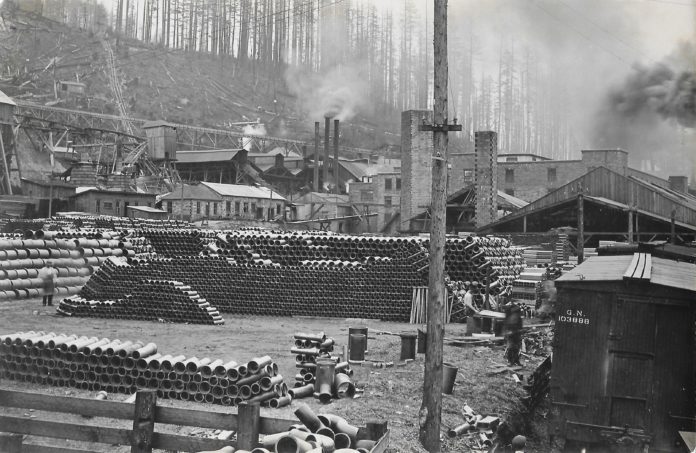The Great Seattle fire of 1889 was the greatest single factor in stimulating the use of clay products as builders looked for non-combustible materials to reconstruct their city. Arthur Denny was one of Seattle’s leading founders, so in 1892 capitalized a clay company. The discovery of coal and clay deposits on the homestead of Sam Galloway led to the Columbia & Puget Sound Railroad building a branch line to the area that same year. When the Northern Pacific Railroad deeded a 640-acre section of land to the Denny Clay Company in 1893, Taylor came into existence. There are two competing claims for the name Taylor. Some suggest it came from a manager of the clay company, William T.W. Taylor while others contend it was named for a Virginia prospector, named James Taylor who may have discovered coal and clay seams when prospecting for the NPRR.
Shown here are thousands of clay tile sections typically used for sewer lines. The large bell-end fits snuggly into the end of the next section. Known as vitrified clay pipes, they are manufactured from a blend of clay and shale subjected to high temperatures to create hard, inert ceramic. Coal, which burns very hot was the fuel used to achieve vitrification and mined on site. They were popular in gravity sewer mains because of their long life and resistance to most domestic and industrial waste, particularly sulfuric acid a common component of sewage. While this sounds new and modern, clay pipes have been used in sanitary sewer systems for at least 5,000 years. This photo comes courtesy of the Maple Valley Historical Society. Next week another column about Taylor.







